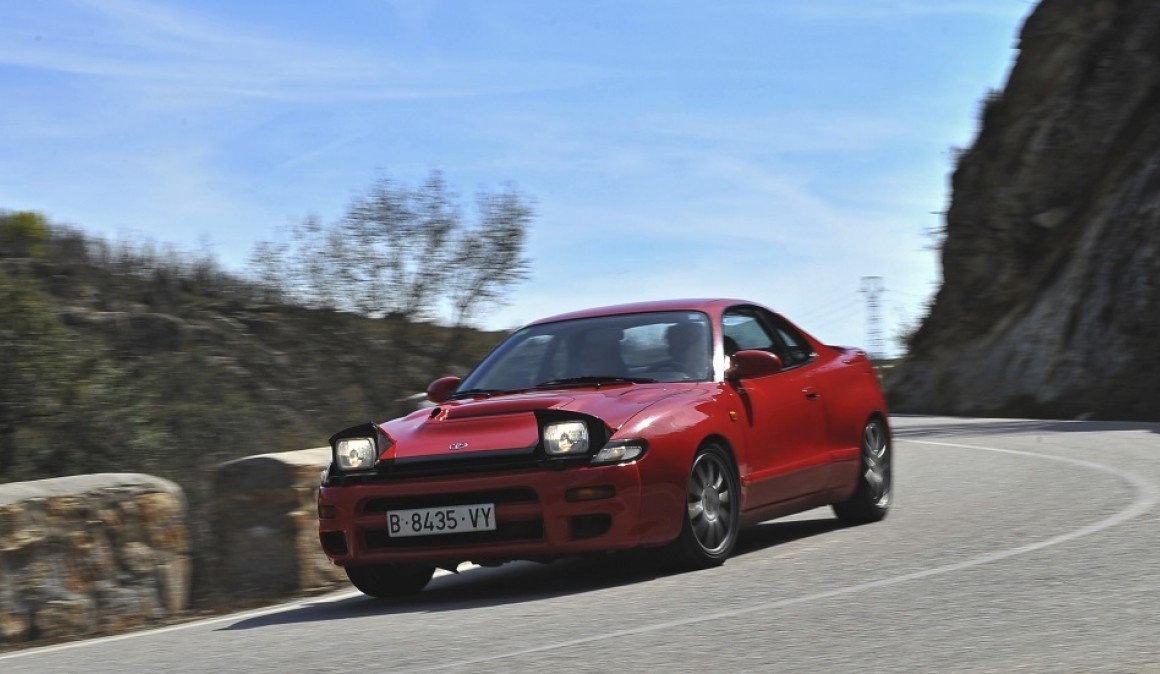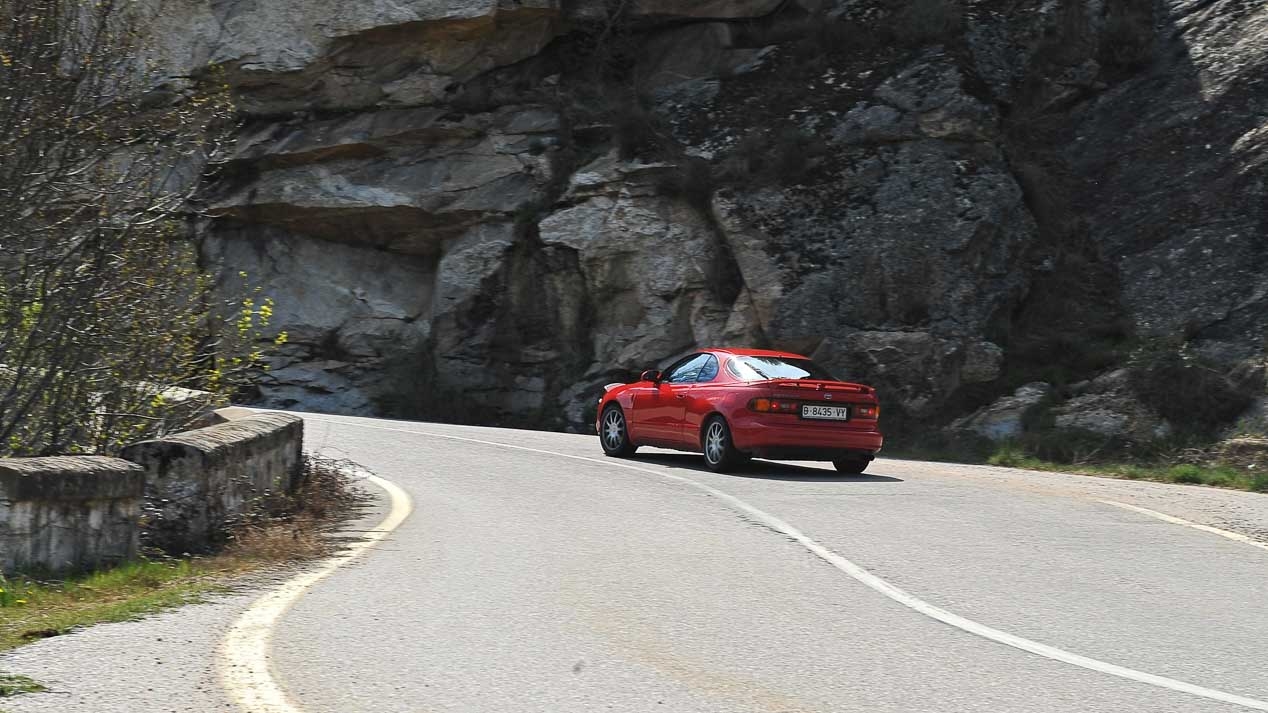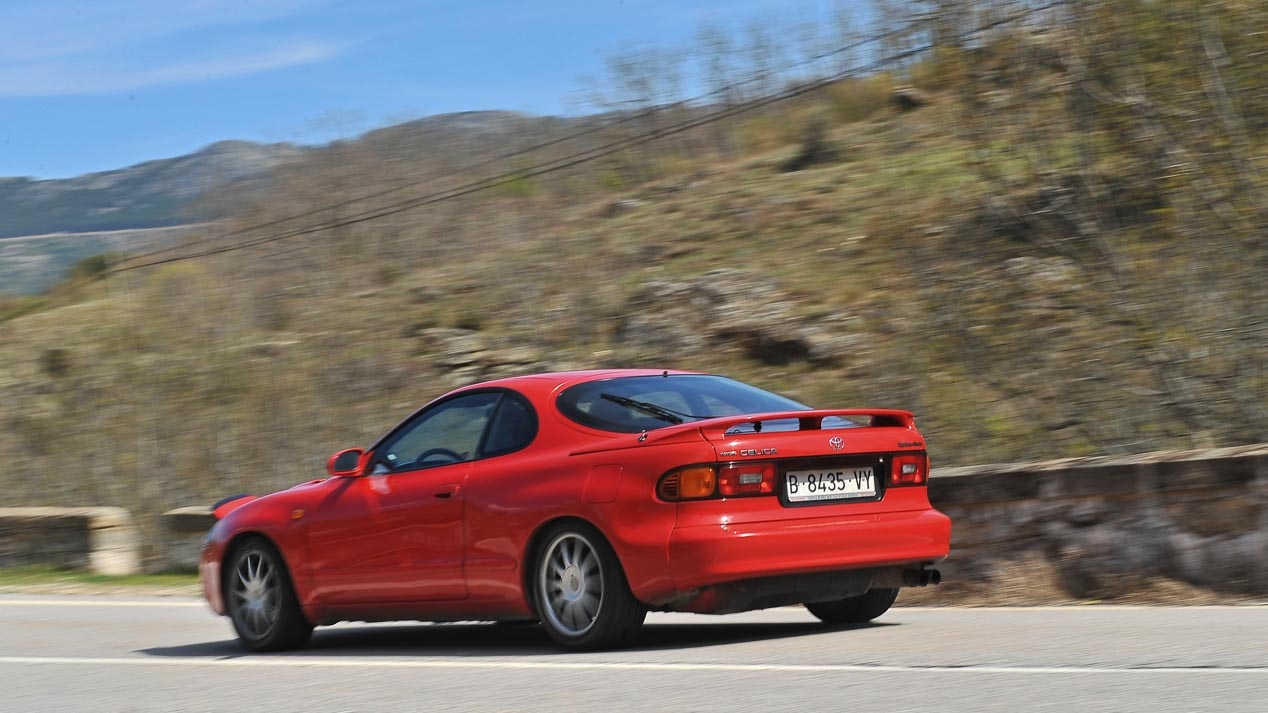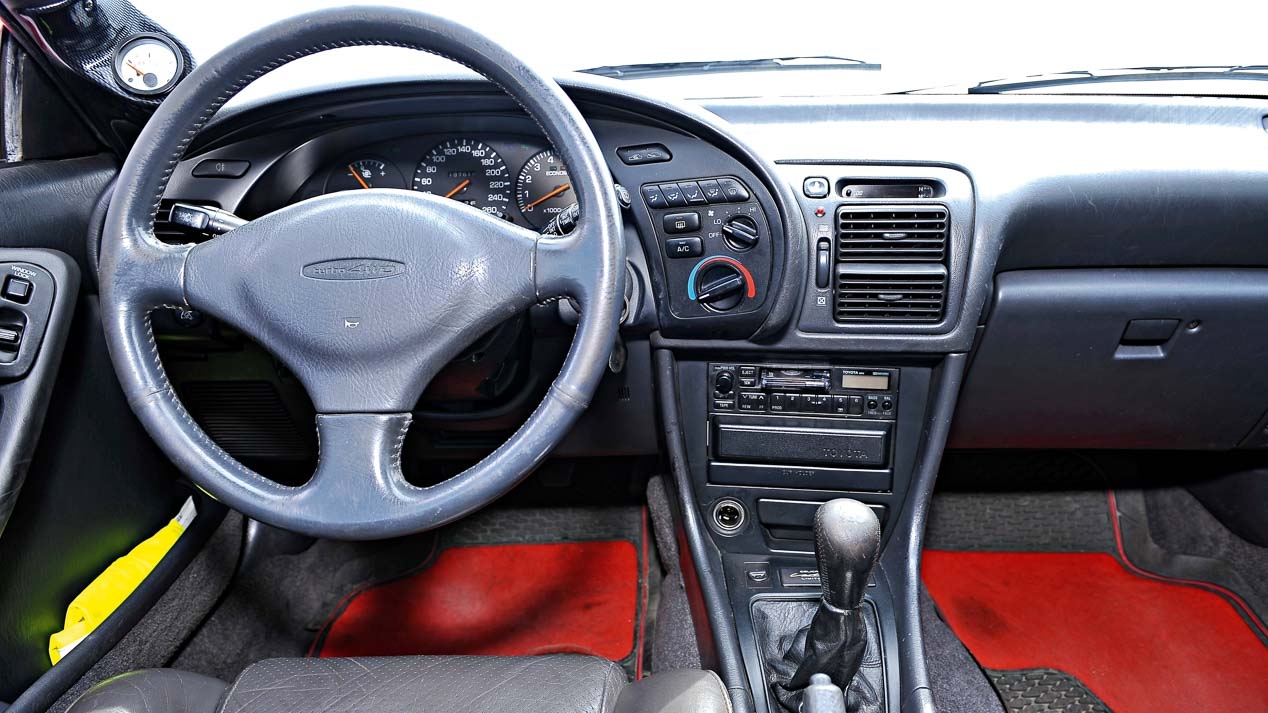Cars for remembrance: Toyota Celica Turbo 4WD Carlos Sainz 2.0
More than 20 years ago that Carlos Sainz won his last World Rally Championship with an innovative car, great presence and extreme efficiency: the Toyota Celica. Thus he was born this incredible edition.
The fifth generation Toyota Celica (With internal designation Toyota T180 Series) Perhaps was not the most successful sales achieved in Spain, where you have to remember that Toyota sales were subject to quotas established and negotiated between the European Union and Japan. Since these quotas existed, the importer of the Japanese manufacturer, Bergé at the time, preferred to favor the importation of models easier to place on the market and not cars as niche segments as could be the Celica. This policy lasted until 1999, where the number of Japanese vehicles sold in Europe, which until then were approximately 8% of total sales in Europe was liberalized.

TO Memorial title by the World Rally Championship 1992, second in the career of Carlos Sainz and manufacturer, Toyota Europe decided to launch a special series of 5,000 units which 150 is intended for Spanish market. That is, a collection that, and for sentimental or economic issues, became a true jewel of modern motorsport history. Carlos Sainz versions of the Toyota Celica ST 185 can be said that emerged from the car that helped the brand to standardize units races and, of these, I had just enough to be a street car around. There was extensive chapters to comfort and what was sought was the effectiveness, achieved thanks to Madrid and dedicated champion, because I must say that at that time the Celica went one step behind the Lancia Delta Integrale of: These were particularly favored for their lower weight, while Toyota had its main guarantee in aerodynamics.
As acquired from a dealer, you could say it was the muleto employing Carlos for reconnaissance of the sections. As such, this special Celica is a car that belongs to another category, is far from the modern sports in which progressive arguments as resilience or put first. This car forces to put the five senses in driving, but in return gives us maximum efficiency, allowing you to enjoy every meter that runs on the asphalt. Many sports feelings really.
 Toyota Celica 2.0 Turbo engine
Toyota Celica 2.0 Turbo engine
He Engine two liter, DOHC and four valves per cylinder, turbo supercharging and with extra cooling allows the intercooler, yielded one maximum power of 208 hp at 6,000 rpm regime, with a maximum torque level 28 mkg at only 4,000 rpm. And it was the best the injection cut it had no less than 7,200 rpm, which allowed him, in sporty driving, the use of second and third gear. It was not a very tight engine, its compression ratio was 8.8: 1. The official top speed was 230 km / h and an acceleration 0-100 km / h under eight seconds.
Aesthetically there are differences that suggest that this is not a normal Toyota Celica: on the hood take more for aesthetic reasons than for extra cooling of the intercooler, different mirrors and oversized tires.
Toyota Celica Turbo 4WD 2.0: How will
Despite the years, the engine sound of this Toyota Celica still delicious, sounds like “fat”, but, of course, this car had a lot of work car. In addition to higher than the turbo intercooler, the exhaust manifold was redesigned so that there was less retention and therefore would improve the breathing, which is coupled with a more captivating sound. The change radiator available for oil and sincros second- and third-reinforced mounted, which tells us that It was designed for sporty driving on mountain road. Tours of the lever, smaller in this version, also resulting in a shortened race almost touch.
Dynamically, the secret of traction of this special Toyota Celica Viscous lay in the front and rear differential Torsen with a fairly successful moron. With both, the motor is fantastic, and today continues to call attention to how it sticks to the asphalt. The damping is firm, but not detract from the comfort of the occupants and can enjoy paths for our most common highways and quiet walks by mountain areas without asphalts broken or damaged impair comfort.

Now if we exploit the capabilities of this sportier Toyota Celica see how your fuel tank is depleted, with a high capacity for its time, 68 liters and well above the Lancia Delta Integrale of, for example. It homologated fuel consumption of 9 liters per 120 km / h and 11.6 in urban route, easily surmountable by little that we do not care with the right foot and we like to hear the whistle blow both turbine as when downloading to move to a higher gear numbers. Two sounds that while we can be very musical, should be discouraging them to have fuel prices right now.
Japanese sports 100%
Inside of Toyota Celica this evolution that have suffered Japanese cars is evident to enter the European market. The years have not passed in vain and quickly come the same sensations that left us years ago. A hard plastic inside our “Europeanized” eye does not look good but the quality is indisputable. It has been kept in perfect condition since, with the exception of pressure turbo clock which was supplemented, so contentious, with another in the amount of the driver.
The Instrumentation is complete, but yet simple, and divided into three areas: the center with the speed, in the right and left cuentarevoluciones sphere three needles (water temperature, boost pressure and fuel reserve level). Here it is true that some of his opponents offered more information to the driver and, above all, he had printed a sportier both spellings as the overall presentation touch. The design at the time was also quite groundbreaking, He directed a dashboard and controls the driver concentrates on the top of the dashboard. Well disposed to the driver’s view and not having to look for the car as it was in some rival models. Toyota quality shows is details such as the virtual absence in squeaks and little sounds inside the passenger compartment and good sound insulation, although it is true that to be a car of the 90s the engine is quite present inside.

Needless to say the Toyota Celica era, from the first generation back in 1972, a full-fledged sport, hence the rear seats are a mere excuse and occupy only possible on an occasional basis in addition to his position, with legs bent and too little legroom, only advisable for those of smaller size. Y the boot, with 292 liters, It is purely symbolic.
his The equipment is good, It not lack the necessities in terms of comfort. Five and a half million pesetas included air conditioning, power steering, electrically adjustable mirrors, adjustable steering wheel and driver bench seat height for better driving position and radio cassette. Safety electronics and beginning to make an appearance in addition to the permanent all-wheel drive available antilock braking system ABS.
At the wheel of this car, reliving sensations and enjoying a pure driving, not of those who are mitigated by electronics, we rediscover that was really brilliant past. This model was competing during the seasons 92, 93 and 94 in the World Rally Championship, achieving in all the world drivers title, first with Carlos Sainz and then with Juha Kankkunen and Didier Auriol. The Toyota Celica is, after the Citroën C4 WRC Sebastian Loeb, the second model with more victories in the World Rally Championship, and that the toughest opponents we can imagine after the mythical time of the Group B faced, that is to say, Lancia Delta HF Integrale, Ford Sierra Cosworth, Mitsubishi Galant VR4, Ford Escort RS Cosworth, Subary Impreza and Mitsubishi Lancer Evo II.
You may also like:
Cars for remembrance: Kadett GSi Opel
Cars for remembrance: Citroën Visa GTi
Cars for remembrance: Renault Fuego

 Toyota Celica 2.0 Turbo engine
Toyota Celica 2.0 Turbo engine